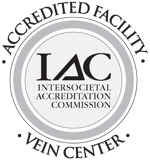Vein stripping is an abrasive name for a surgical procedure, often performed in the hospital or an outpatient center, to remove large varicose veins from the legs and thighs. It is a treatment selected for venous insufficiency, when there is a problem with the blood flow. It can also be employed for leg ulcers, blood clots, swelling or inflammation. It has given way to more modern techniques to eliminate unsightly varicose veins.
The goal of the procedure was to remove the vein that has incompetent or bad valves. These poorly functioning valves allow blood to flow backwards down the vein thereby increasing the pressure in the veins. This then leads to enlargement, or dilatation, of the veins in the leg, which are known as varicose veins. It is these veins that tend to hurt or ache at the end of a long day on one’s feet!
The surgery to remove the vein with the poor valves was often done under general anesthesia. The process involves the surgeon making two incisions in the leg -- one at the groin and one near the ankle or calf. A wire is then inserted, tied to the vein, and the vein is pulled out through one of the incisions. The procedure takes about 60-90 minutes. The cuts are closed with stitches, also called sutures.
Vein stripping had been the mainstay for the treatment of varicose veins for years, but in recent years has seen a decline as it has been replaced by the less invasive laser or radiofrequency ablations and microphlebectomies that are done at the Vein Institute of New Jersey treatment centers. They are performed under local anesthesia. The trend has been to move away from the hospital setting and away from general anesthesia when possible.
After vein stripping, you would be able to return to normal activity in about 2 weeks. Your pain should be reduced and your legs should have an improved appearance.
To learn more about which vein treatment would be right for you, schedule an appointment with us today!


.jpg)





.jpg?width=944&name=Castle-Connolly-Top-Doctors-Emblem-Large%20(4).jpg)